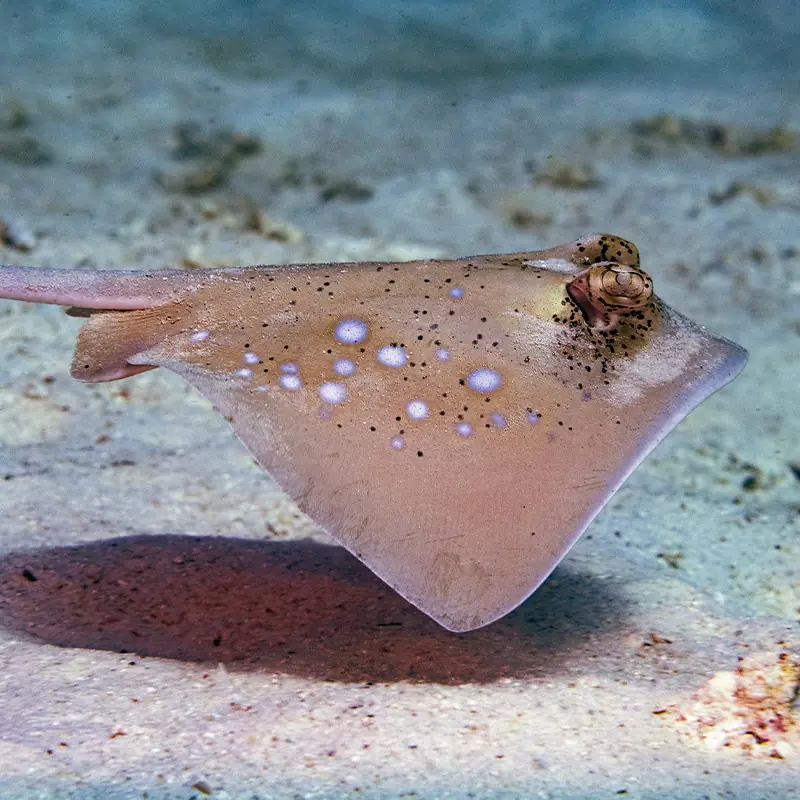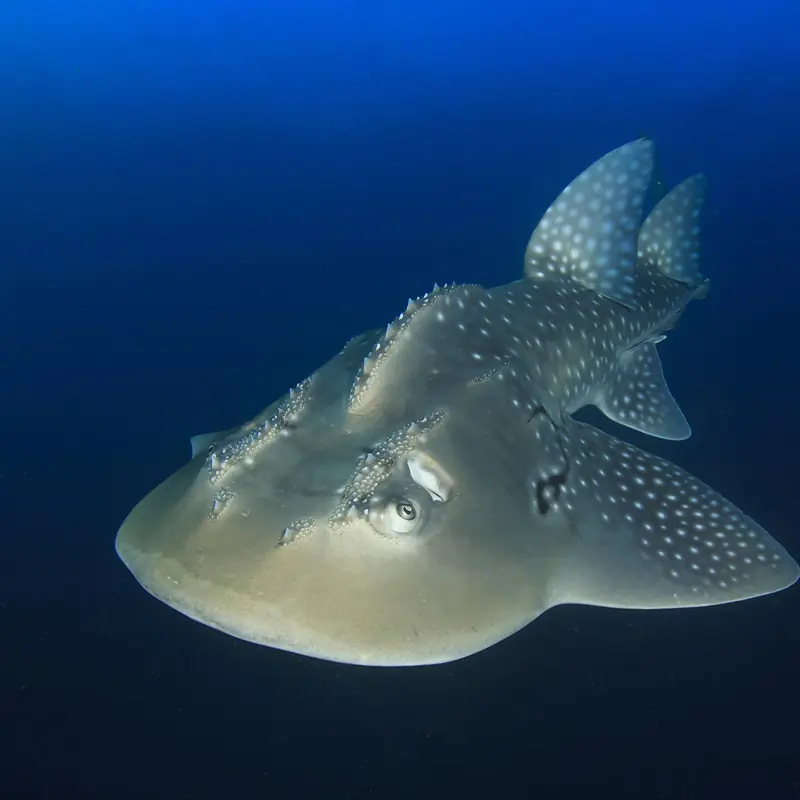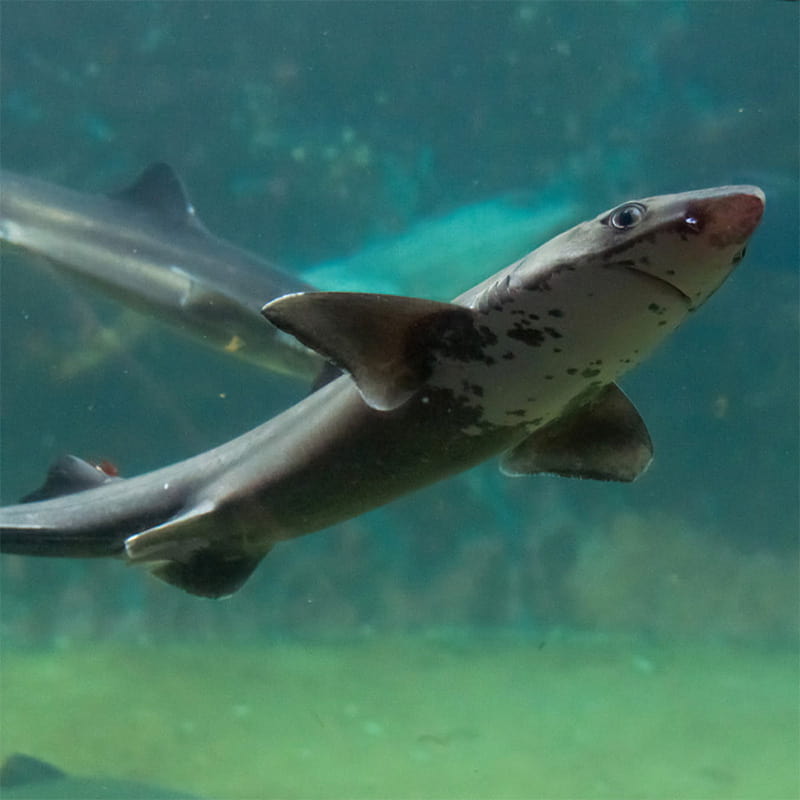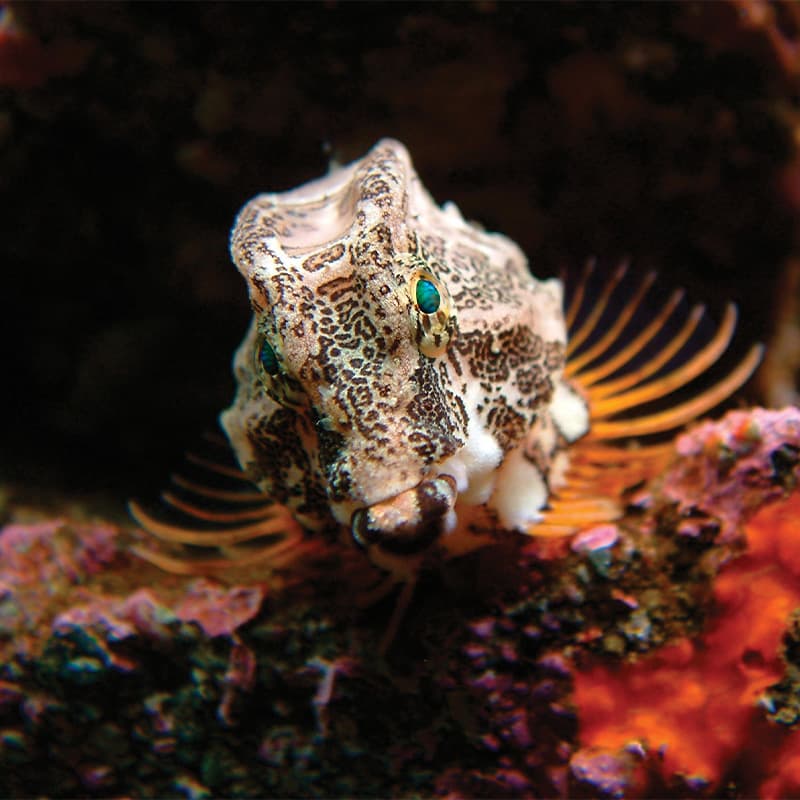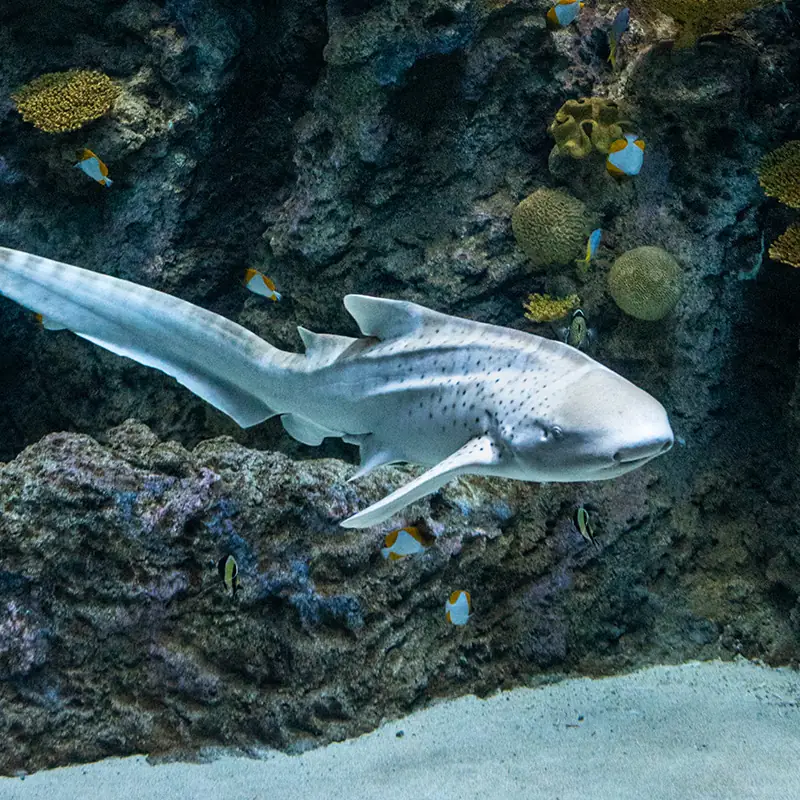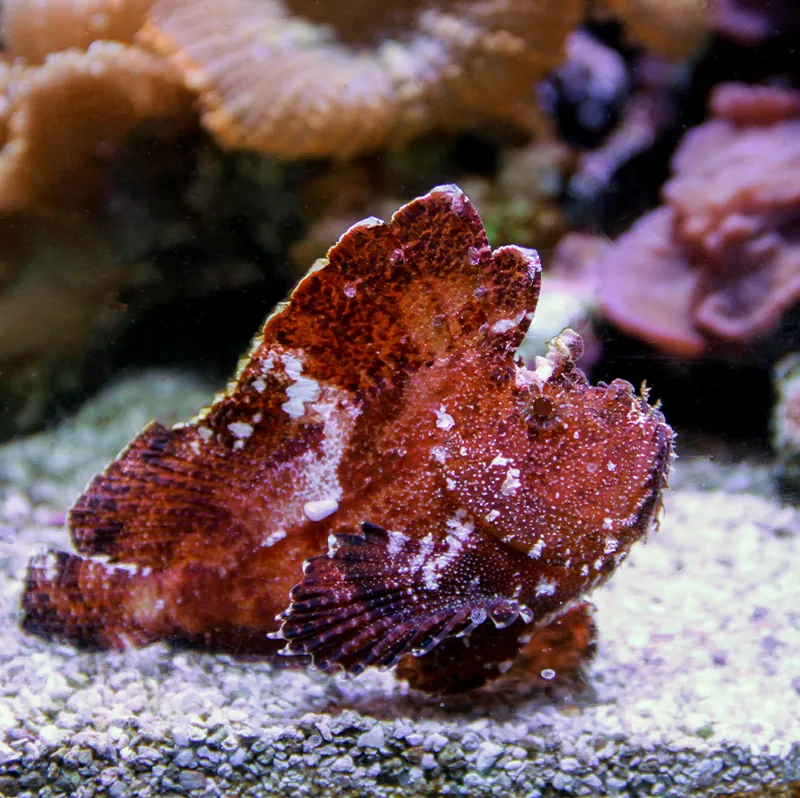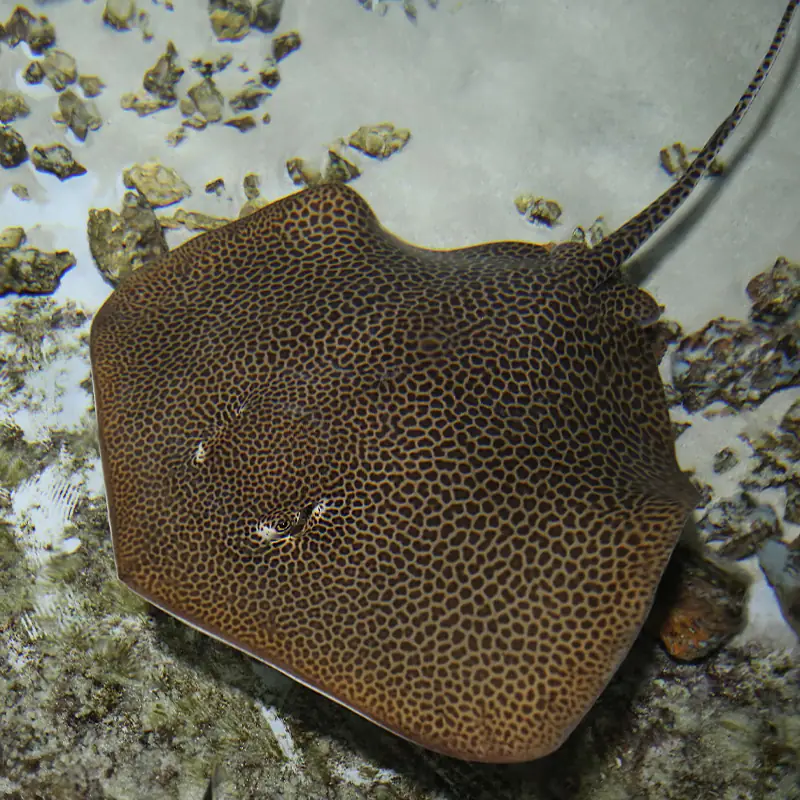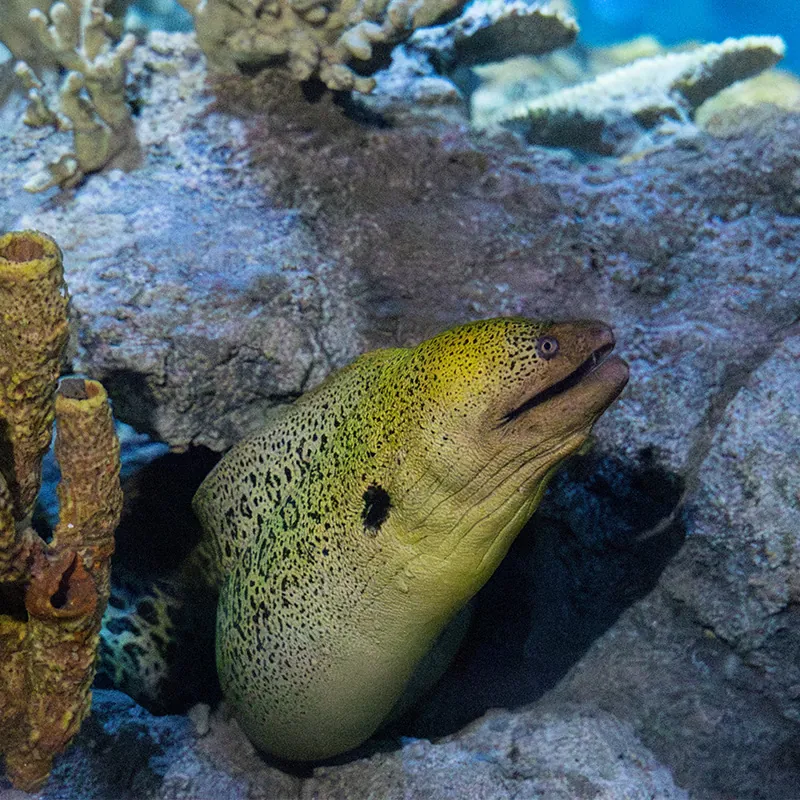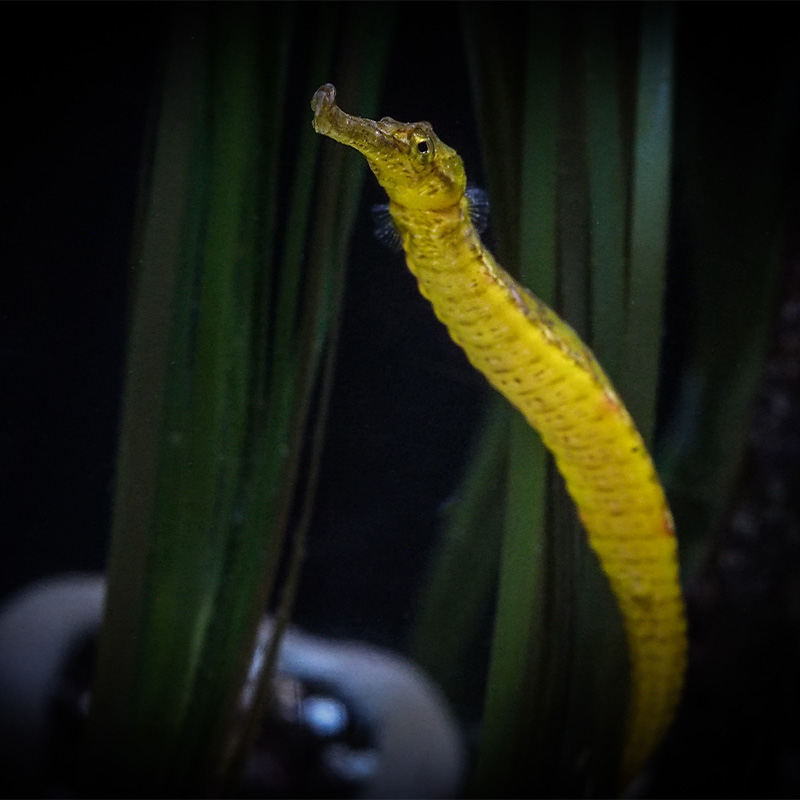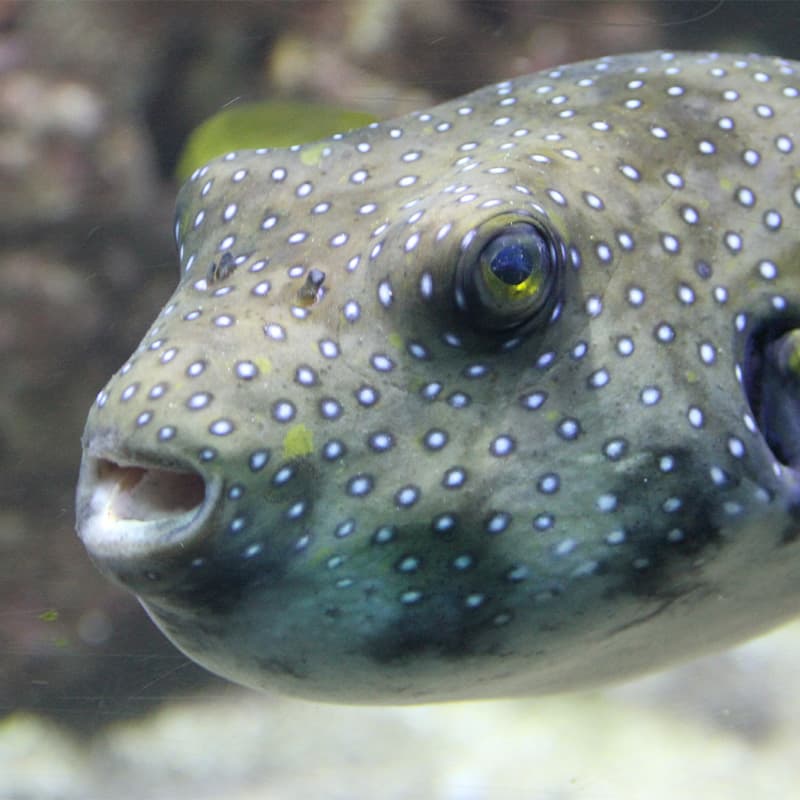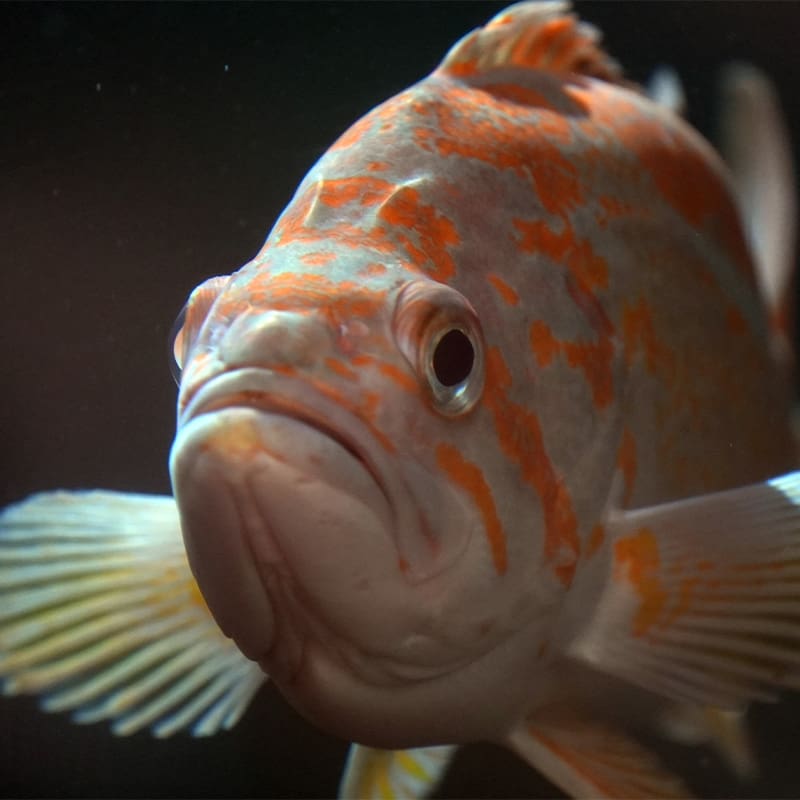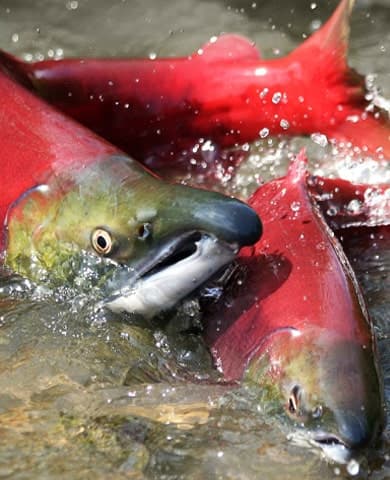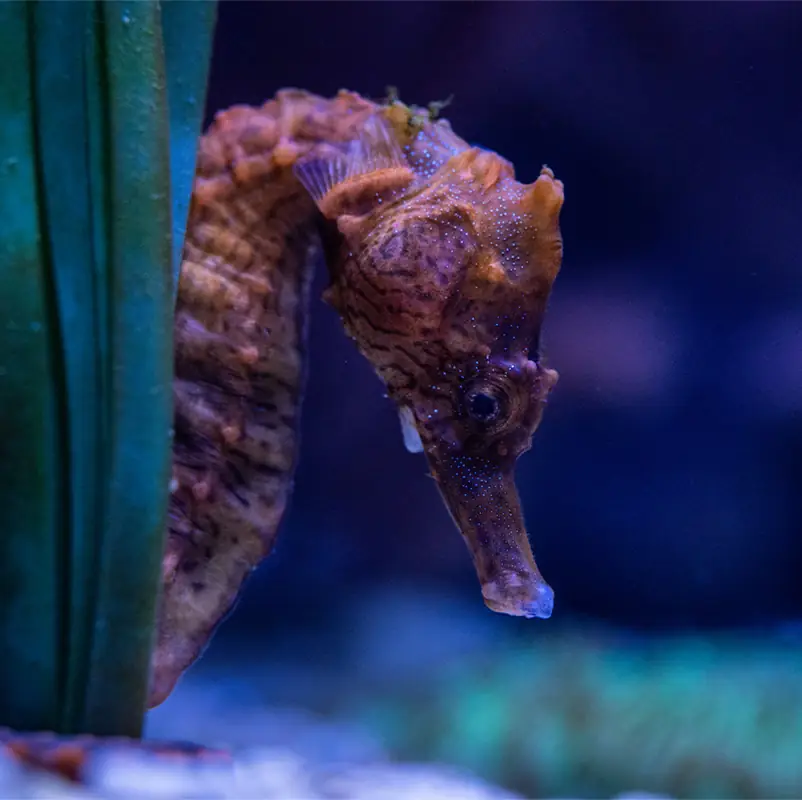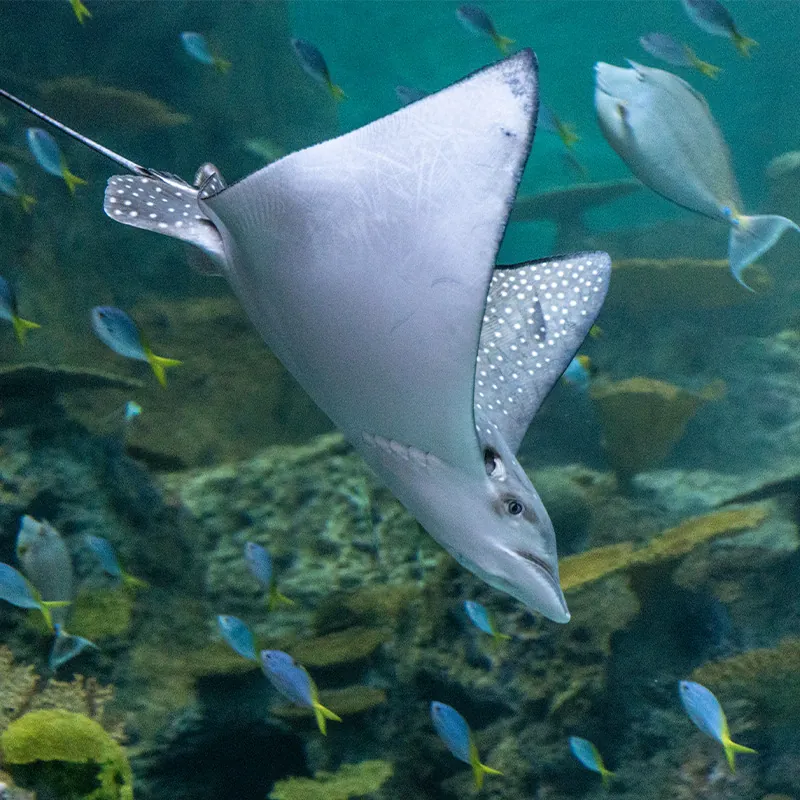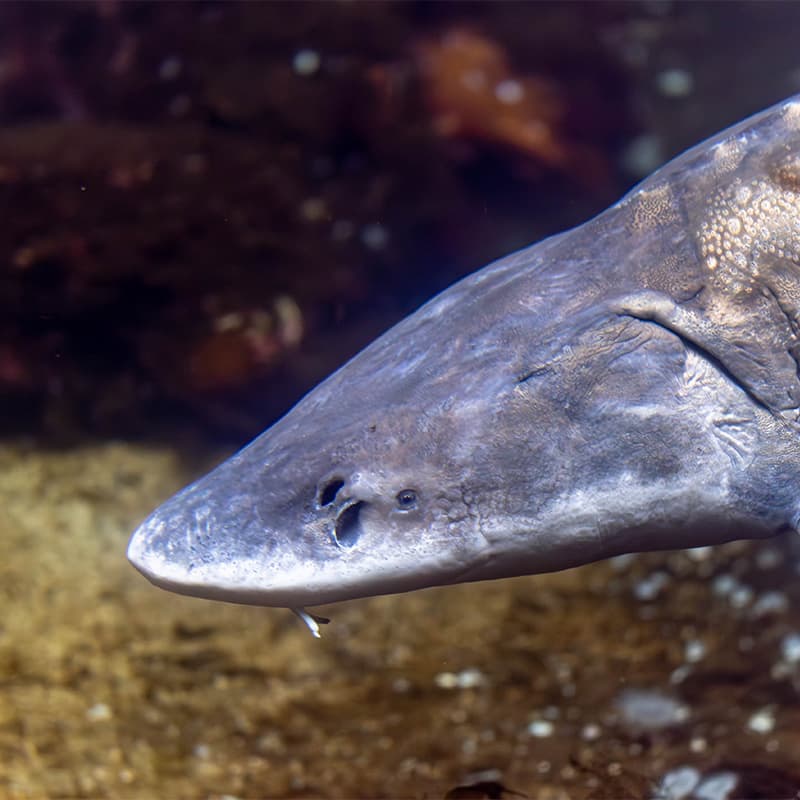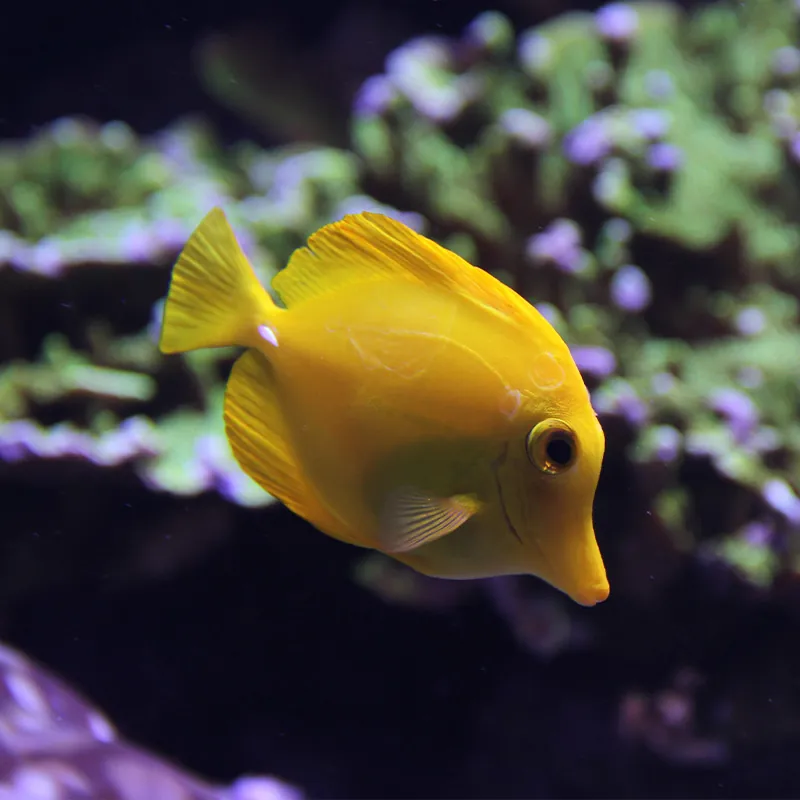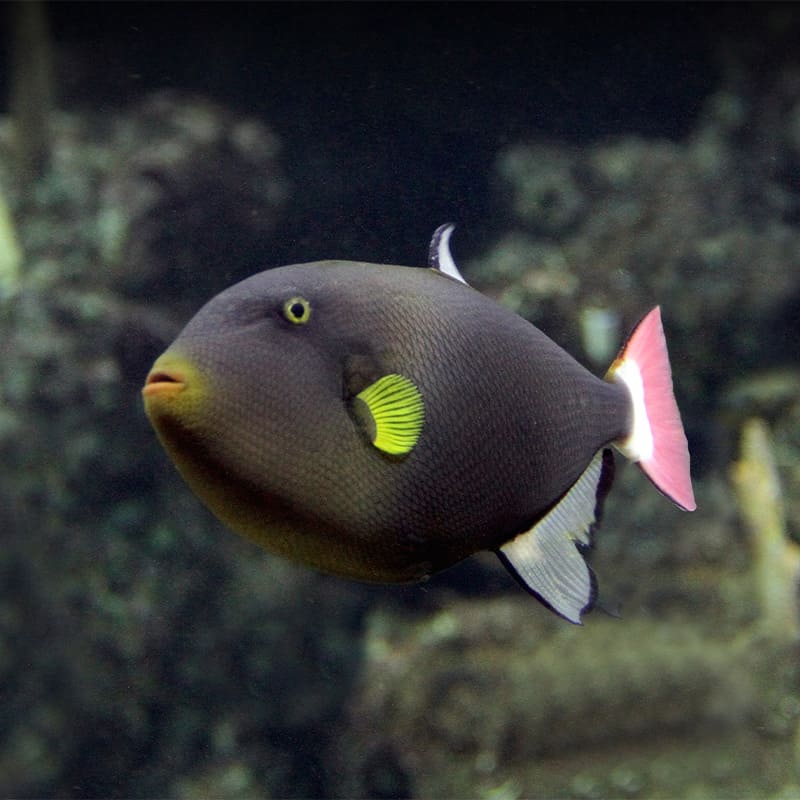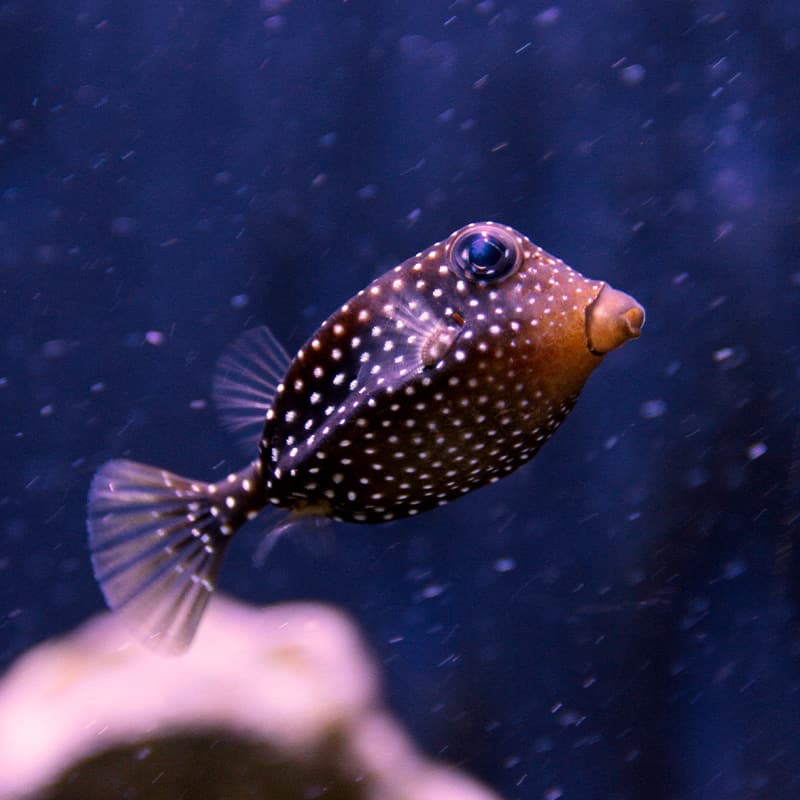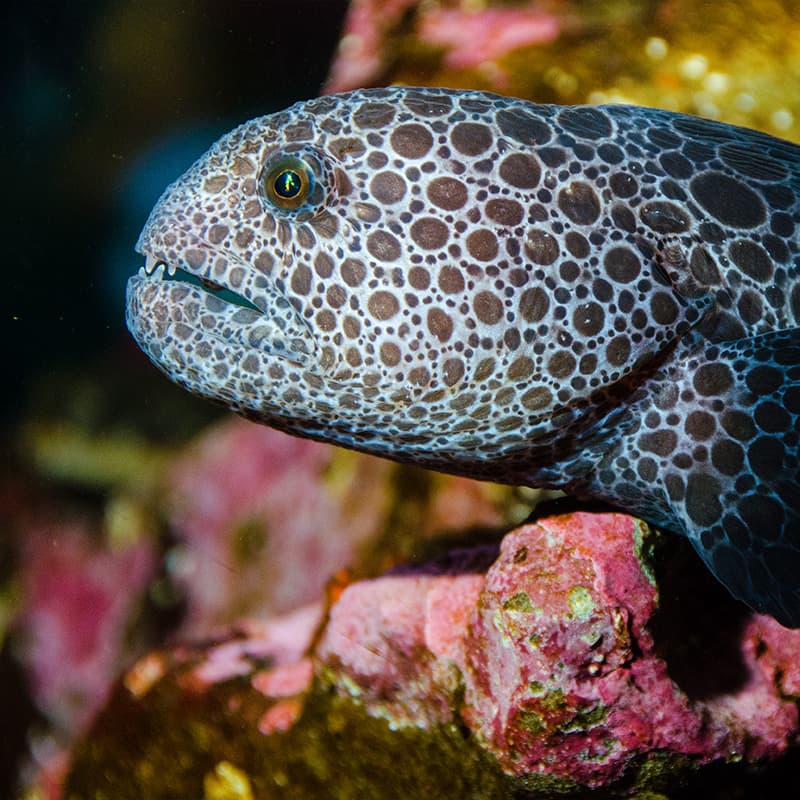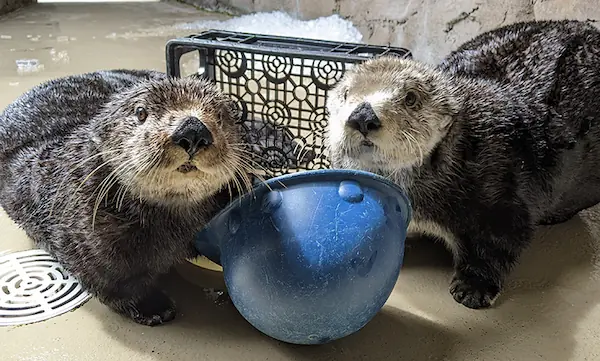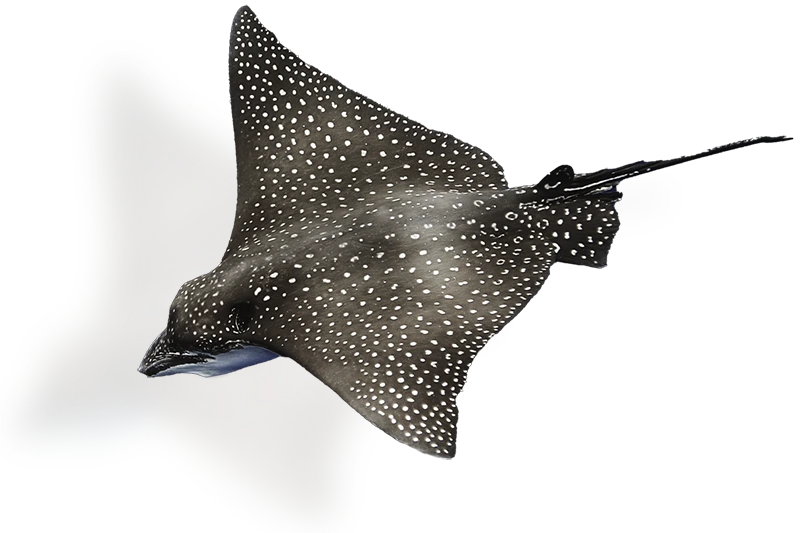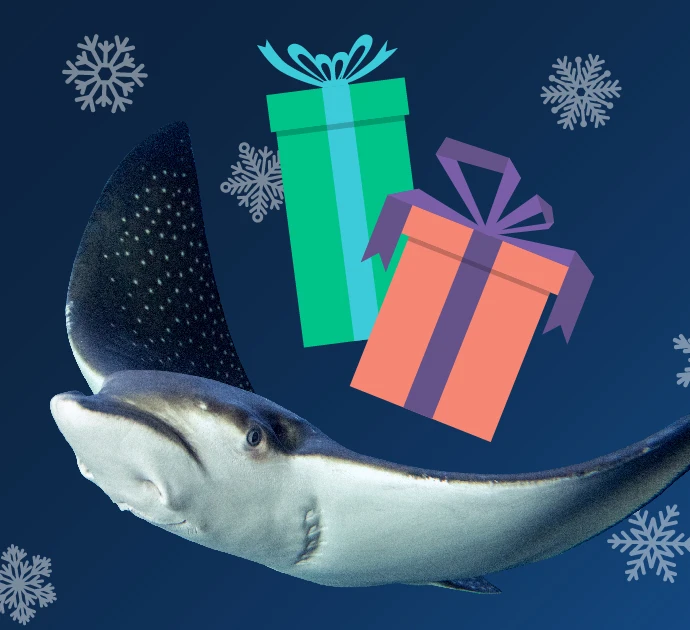- Fish
Clownfish
Cute—and complicated
These fish are also known as anemonefish because they make their homes within the tentacles of sea anemones. But sea anemones use their tentacles to sting, paralyze and eat fish. So why would Amphiprion sp., aka clownfish, live with such a host? It’s complicated.
At the Aquarium
- At Home in the Ocean, Ocean Pavilion
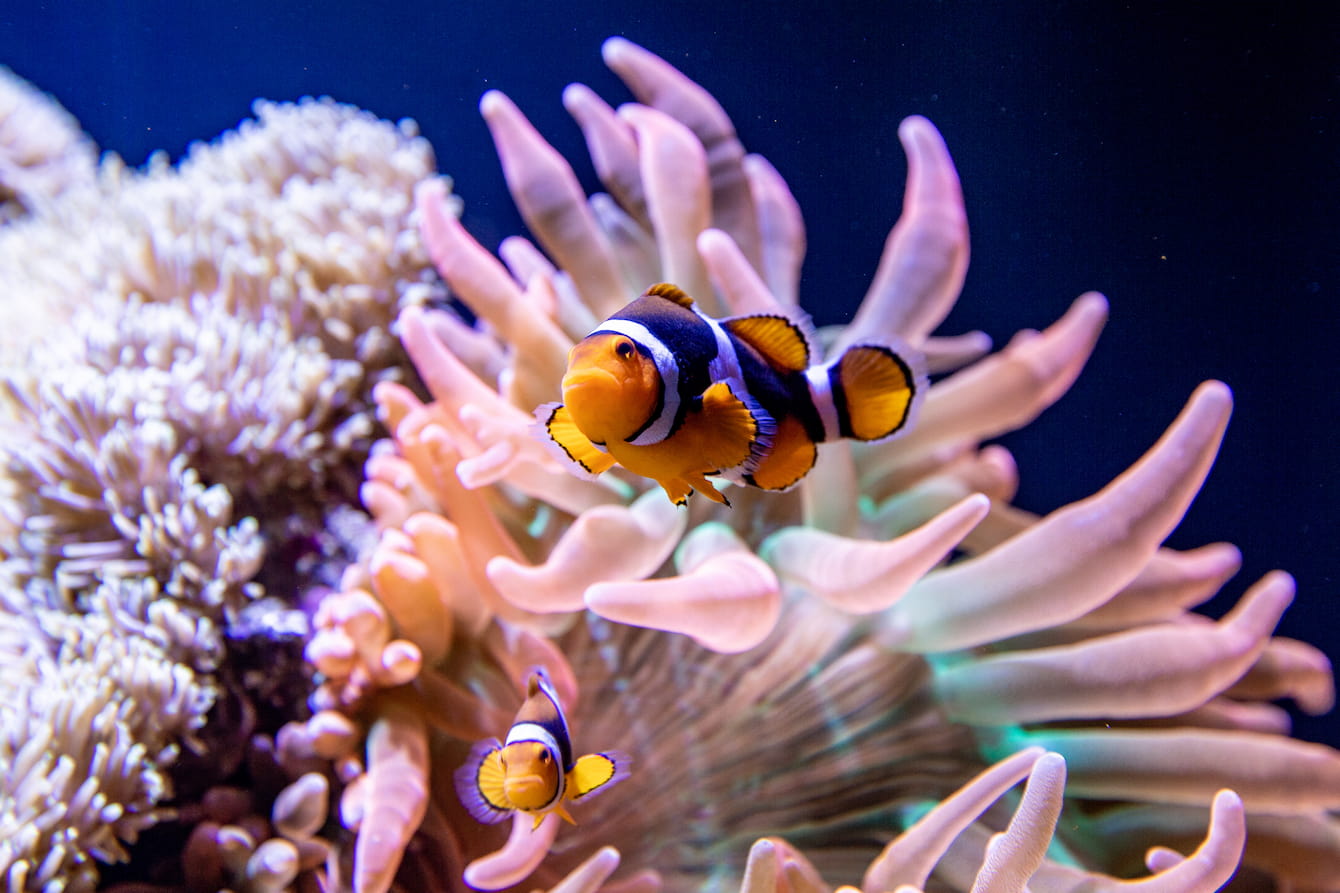
Wanted: warm waters, plenty of plankton and an accommodating host
Clownfish live in sheltered coral or rocky reefs in warm, tropical waters from the Red Sea to the Pacific Ocean. Feeding on small invertebrates (animals without backbones), small crustaceans (such as crabs), zooplankton (tiny animals drifting in the water) and algae, they grow to an average length of 4.5 inches. They can live up to 12 years and may be orange, yellow, red, brown, black or other colors. And about those roommates? Read on!
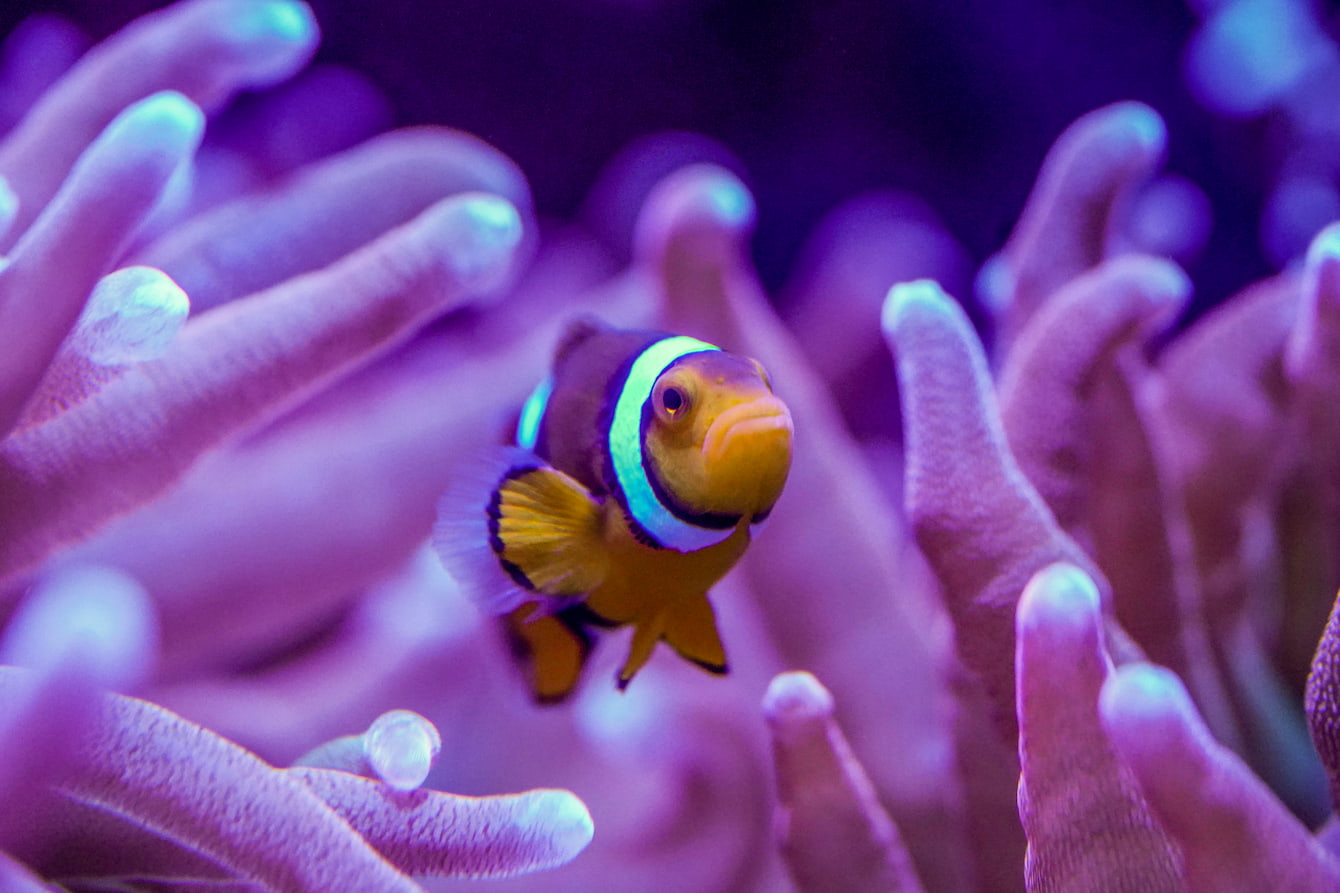
My frenemy, the anemone
Every clownfish survives thanks to a sea anemone. (Don’t worry; clownfish are protected by a no-stings-allowed coat of mucus.) Most species use one specific anemone as a host. The relationship benefits both sides: The clownfish, dwelling literally within the arms of a predator, enjoys safety from its own predators—and picks up occasional scraps from the anemone’s meals. The usually immobile anemone catches prey lured by the colorful clownfish and gets nutrients from eating clownfish poop (funny but true!). Now that’s a friend!
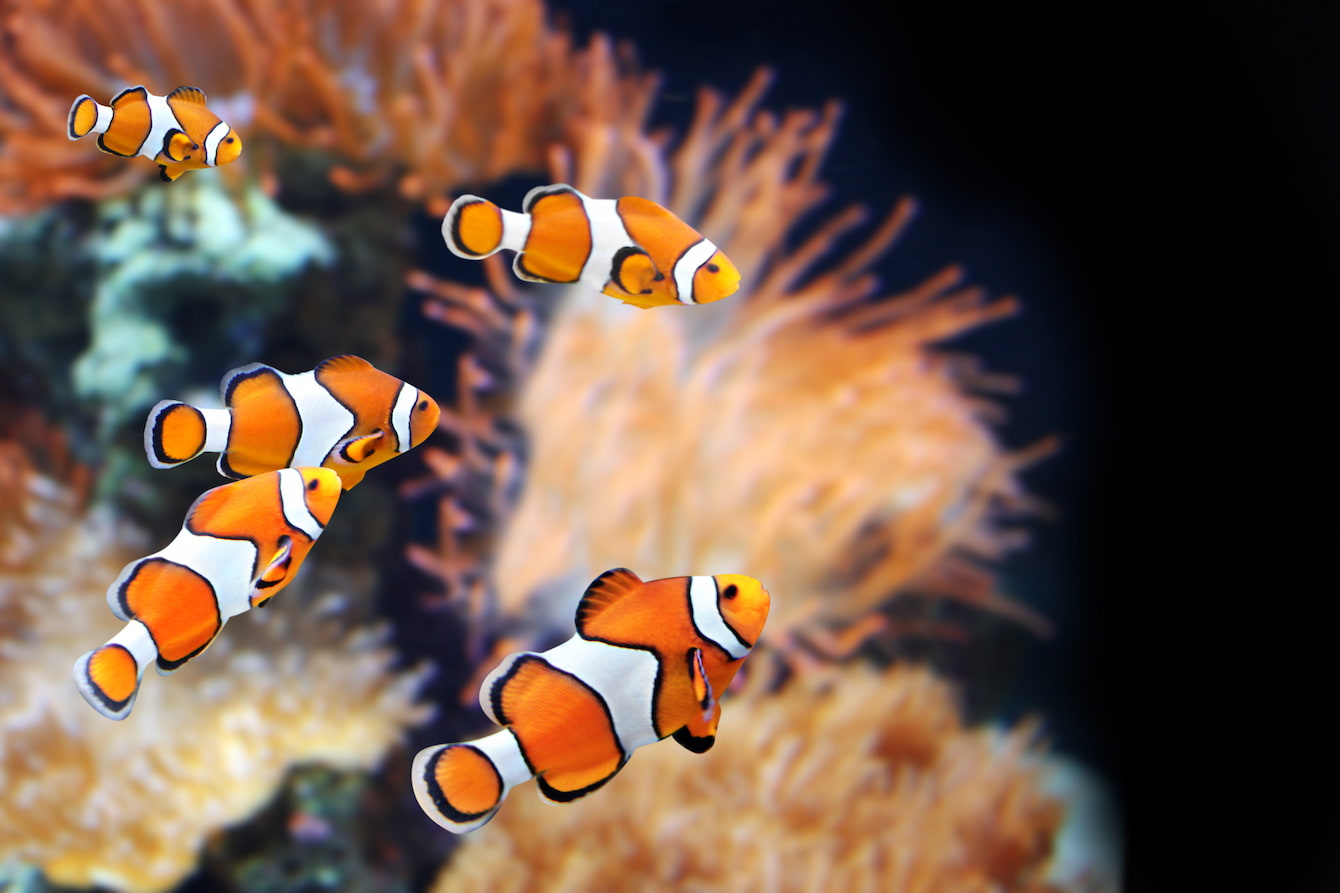
Succession, clownfish style
All clownfish are born male into a female-dominant social hierarchy. Each small group has a dominant female, a dominant male and several smaller, younger males. Only the dominant pair can reproduce. When the female dies or leaves the group, they don’t search for a new matriarch. Instead, the dominant male transforms into a female to sustain the group. Once changed, they can’t change back—but all the young dudes move up a spot in the hierarchy.
Dad’s a fan, mom’s on guard duty
The dominant clownfish pair mates for life and reproduces through external fertilization. First, they poke at the anemone’s tentacles to clear space for the nest. The female lays hundreds to thousands of eggs, which the male fertilizes. Once the embryos attach to a surface, the male takes over caregiving, fanning them to increase their oxygen intake as they grow. Meanwhile, the female keeps predators away. Six to 10 days later, the baby clownfish hatch in open water.
Finding you-know-who is getting harder
Clownfish aren’t listed as endangered but their numbers have decreased in parts of our one world ocean. Even if you live thousands of miles away from the warm, tropical waters where they make their homes, you can make a difference by raising your voice to protect ocean health and more. Visit our Act for the ocean page for details!
Quick facts
Clownfish dwell literally within the venomous tentacles of a sea anemone, safe from their own predators.
Sea anemones get some of their nourishment by eating clownfish poop (funny but true!).
In the female-dominant hierarchy of clownfish, only the dominant female and male reproduce.
